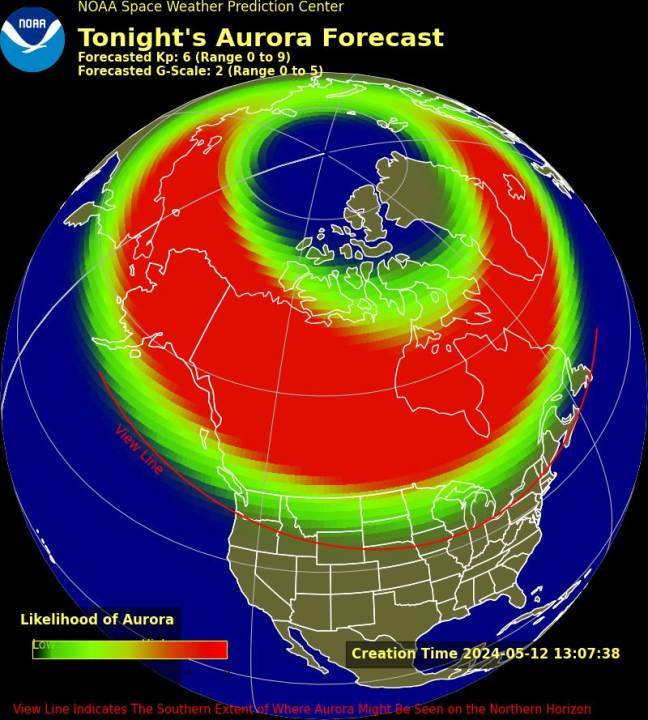Map: Will you see the northern lights again on Sunday?

(NEXSTAR) — It’s been quite the weekend for skywatchers as rare, strong geomagnetic storms have impacted Earth, sparking dazzling northern lights — and it’s not over yet.
NOAA’s Space Weather Prediction Center (SWPC) says more “very fast moving coronal mass ejections will slam into Earth’s magnetic field” through Sunday night, giving Americans a third consecutive night with a chance to see the northern lights.
Saturday, the aurora was strong enough to reach Florida, according to Nexstar’s WFLA. That’s only possible when geomagnetic storms reach G5 strength, the SWPC explains (here’s how geomagnetic storms are classified).
Can’t see the northern lights? Try using your phone camera
G5 level storms were also reported Friday night into Saturday. We haven’t seen G5 level storms since 2005, when a series of coronal mass ejections brought dazzling northern lights displays as far south as California, Texas, and Florida — states that rarely ever see them — and caused other (less awe-inspiring) technical problems.
As for Sunday, the SWPC is warning we could see storms of G4 or greater strength. Below is SWPC’s aurora forecast for Sunday — areas in red have the greatest chance of seeing the northern lights, while those in green and near and above the red line have a slimmer chance. It’s worth noting that the forecast may fluctuate, and the northern lights may appear even in areas that aren’t shaded red or green on the map below.

If you’re unable to see the northern lights Sunday night, you may want to try using your phone. Point your camera toward the night sky and take a picture — you may be surprised to see the aurora.
Solar storm 2024: What should you do to prepare?
You may have a chance at catching the northern lights again this week, with the SWPC reporting the aurora activity could continue as solar activity remains especially high. That also means potential impacts to our power grid and other infrastructure, though many are prepared for events like this and no serious problems have been reported with this storm.
All of this solar activity is thanks to Solar Cycle 25, which was expected to peak this year. During the 11-year period of a solar cycle, the sun will flip its poles, causing solar activity that generates geomagnetic storms on Earth.
Alix Martichoux and The Associated Press contributed to this report.
For the latest news, weather, sports, and streaming video, head to PIX11.

